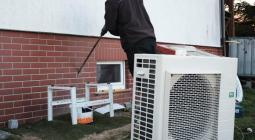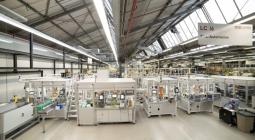Commercial Heat Pump Retrofits Remain Costly, Intrusive

Physical challenges and high costs remain significant obstacles to getting climate-friendly heat pumps into commercial buildings, according to some of the suppliers working on the problem.
The ability to get such a huge overhaul done is “very much occupant-driven,” Kailash Viswanathan, energy director at Arch Energy and part of a team retrofitting heat pumps into a New York City high rise, told Smart Cities Dive. While a centralized plan can make it easier, “you still have to get into the building, open up walls, and change pipes to make it happen.”
In most cases, those changes can only be made “when occupants are leaving or when there’s a turnover of tenants.”
Part of the challenge is that heat pumps work best if the water running through them stays at a lower temperature—between 48°C and 60°C (120°F to 140°F)—rather than the usual 82°C (180°F), Viswanathan added. But delivering the same amount of heat with lower-temperature water requires a greater flow rate. “That means you need to increase the diameter of the pipes,” which again means getting into an occupant’s space.
Those disruptions help explain why heat pump installations in large buildings are likely to take time. Many buildings have 10- to 12-year plans. Challenging buildings, like historic ones, can take an even longer time to retrofit—about 20 years or so.
“It’s not going to happen overnight,” Viswanathan said.
Commercial heat pump installations are also expensive, Smart Cities Dive writes, citing a report from Rosen Consulting Group that put the cost of retrofitting a typical gas-powered office building in New York State in 2022 at US$17 to $24 per square foot for a ground-source heat pump, $12 to $21 per square foot for air source. In the U.S., federal tax credits and rebates under the Inflation Reduction Act offset a portion of the cost.
Ryan Colker, vice president of innovation at the International Code Council, said commercial building owners and facility managers should undertake full energy audits before finalizing their retrofit plans. The data will help them determine “where you’re going to get the most bang for your buck and where you’ll get the best climate change impacts,” he said.
PHOTO: Bruce Emmerling/wikimedia commons





